Launched in 1968, the Ultra-Chron Diver made history as the first diver's watch to feature a high-frequency movement. At the time, Longines had already established itself as an expert in this technology, having patented it in 1910 for use in sports timekeeping. In 2022, the brand unveiled a new generation Ultra-Chron, which paid tribute to the 1968 model while incorporating the latest technological innovations.
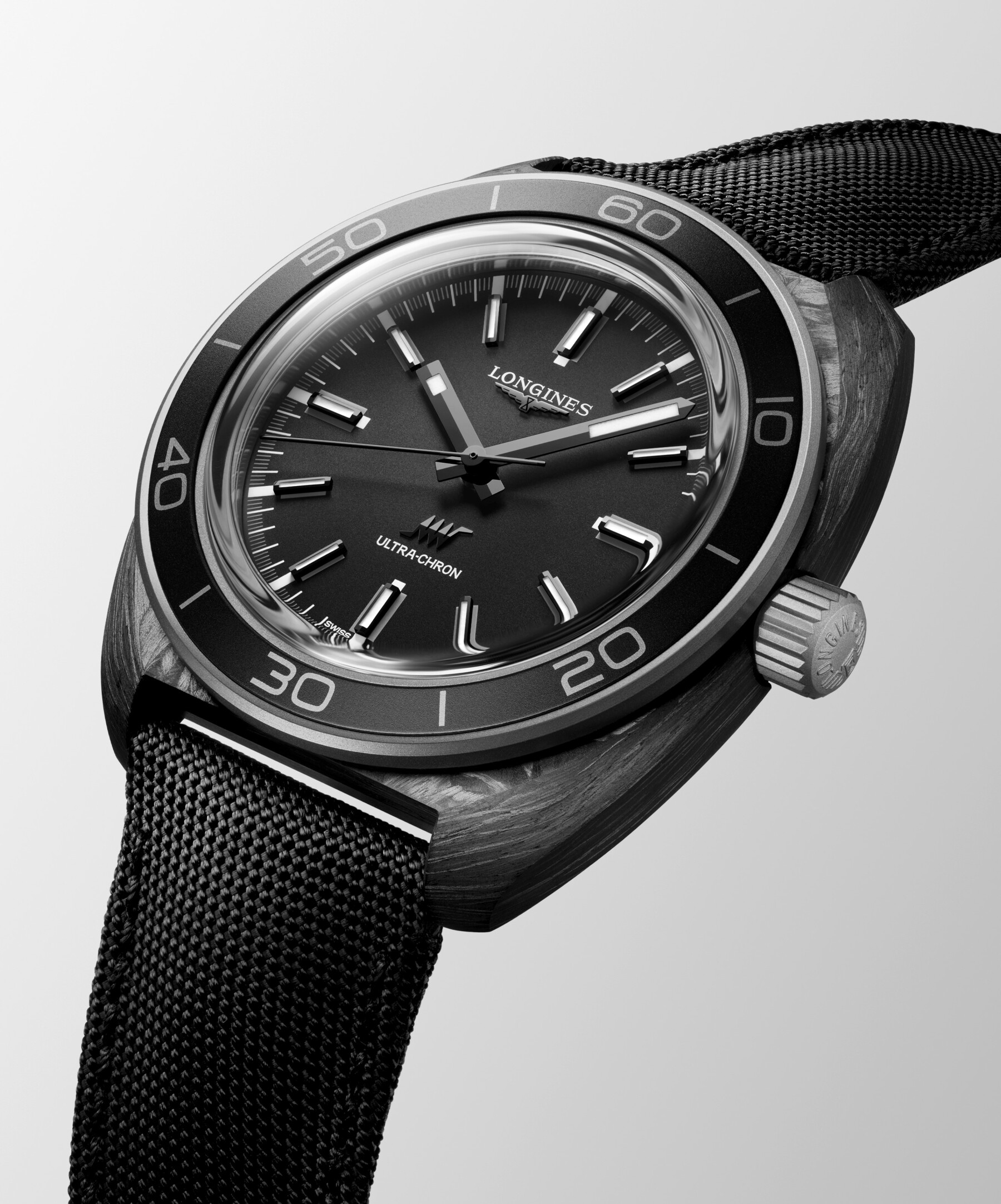
A first for Longines
Today, Longines continues to innovate by introducing a new Ultra-Chron model with a carbon case, a first for the brand. This material, known for being both ultra-resistant and lightweight, is widely used in cutting-edge industries such as aeronautics, a field with which Longines has been closely associated for over a century.
The 43 mm-diameter case is crafted from strips of unidirectional carbon fiber and epoxy resin, which are then placed into a mold and heated to a high temperature, compressed under high pressure, and finally cold-cut. It then takes on the iconic cushion shape of the Ultra-Chron case.
This unique manufacturing process creates random patterns in the layout of the fibers, making each case visually unique and giving it a strong identity. Thanks to carbon's lightweight properties, this new model weighs less than 80 grams, including both the watch and strap. It is water-resistant up to 30 bars (300 meters).
The titanium bezel is fixed and features an aluminum insert engraved with a scale numbered in increments of 10. The case back and screw-down crown are also in titanium. Beneath a sapphire crystal with multi-layer anti-reflective treatment, the sand-blasted anthracite dial features a chapter ring marked by twelve applied silver indexes. These, along with the gray PVD hour and minute hands, are coated with a Super-LumiNova® blue luminescence treatment.
High frequency and precision
Like the other models in the collection, the Ultra-Chron Carbon is powered by the exclusive Longines high-frequency caliber L.836.6. This movement oscillates at 5 Hertz, or 36,000 vibrations per hour. Compared with conventional mechanical movements, it offers greater stability in response to shocks and changes in position caused by wearing the watch. Equipped with a silicon balance-spring and innovative components, this caliber is also up to ten times more resistant to magnetic fields than the ISO 764 standard.
This watch is also fully certified as a chronometer by TIMELAB, an accredited independent watch testing laboratory in Geneva. In keeping with the ISO 3159 standard, the qualification process subjects the finished product to a 15-day testing period during which the entire watch is put through a series of functional tests in various positions, repeated at three different temperatures, 8°C, 23 °C and 38°C, to confirm its accuracy.
The Ultra-Chron Carbon is fitted with a black technical fabric strap featuring a titanium buckle. Embracing dark tones, the watch is presented in a bespoke black box.
LONGINES AND HIGH FREQUENCY: OVER A CENTURY OF INNOVATION
1910
First patent for a pocket chronograph stopwatch capable of measuring 1/10th of a second.
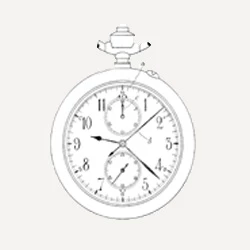
1914
High-frequency stopwatch (5 Hz) with split-second hand. Manual counter with three pushers, housed in a steel case. High-frequency hand-wound mechanical movement (36,000 vibrations/h), Longines caliber 19.73N. Time measurement to 1/10th of a second.
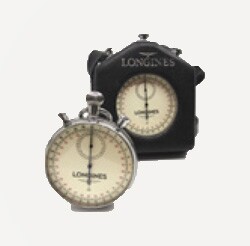
1916
Very high frequency stopwatch (50 Hz) with split-second hand. Single push-piece manual counter, housed in a stainless-steel case. High-frequency hand-wound mechanical movement (360,000 vibrations/h), modified Longines caliber 19.73N. Time measurement to 1/100th of a second.
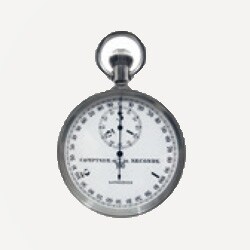
1938
High-frequency stopwatch (5 Hz) with split-second hand. Professional three pushers counter in Staybrite steel case. High-frequency hand-wound mechanical movement (36,000 vibrations/h), Longines 24-line caliber on a cal. Longines 24.99 - marine chronometer. Time measurement to 1/10th of a second. Variant at 1/100th of a second.
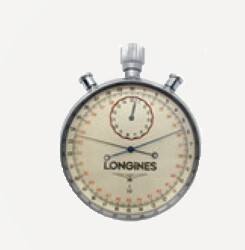
1959
Observatory chronometer, for precision competitions. Rectangular steel case. High-frequency (5Hz) hand-wound mechanical rectangular movement, Longines 360 caliber, hand-crafted. Extreme accuracy, with a daily deviation of less than or equal to 1/10th of a second. 1st and 2nd places in the timekeeping competition at the Neuchâtel Observatory (Switzerland) in 1961, and 1st, 2nd and 3rd places in 1962.
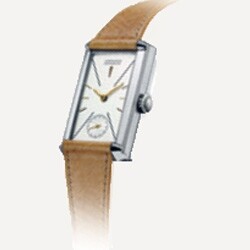
1966
Ultra-Chron, ref. 7827. Round steel case, 35 mm in diameter. High-frequency (5Hz) self-winding mechanical movement, Longines caliber 431 with patented dry lubrication, and with date. Longines guarantees accuracy of one minute per month, or two seconds per day. Registered name. First mass-produced high-frequency precision wristwatch.
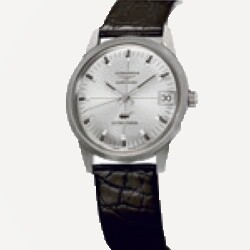
1968
Ultra-Chron Diver, ref. 7970. Cushion-shaped stainless-steel case with screw-down case back, 41 mm in diameter; water-resistant to 200 m. High-frequency (5Hz) self-winding mechanical movement, Longines caliber 431, with date. Longines guarantees an accuracy of one minute per month or two seconds per day. The first high-frequency diver's watch.
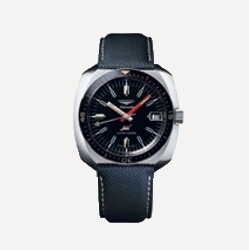
2022
Ultra-Chron, ref. L2.836.4.52.9 Cushion-shaped stainless-steel case with screw-down case back, 43 mm in diameter; water-resistant to 30 bar (300 m). High-frequency (5Hz) self-winding mechanical movement, exclusive Longines caliber L.836.6. The entire watch is certified as a chronometer in accordance with ISO 3159 standards.
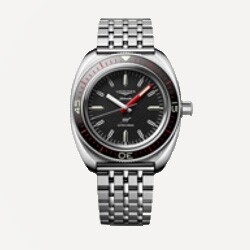
2024
Ultra-Chron Carbon, ref. L2.839.4.52.2. Cushion-shaped carbon case with screw-down titanium case back, 43 mm in diameter; water-resistant to 30 bar (300 m). High-frequency (5Hz) self-winding mechanical movement, exclusive Longines caliber L.836.6. The entire watch is certified as a chronometer in accordance with ISO 3159 standards.
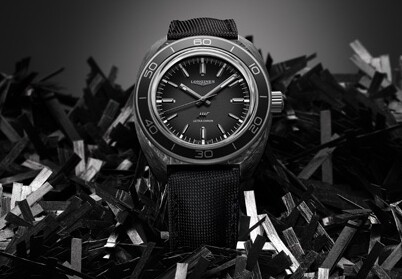
LONGINES, THE HIGH-FREQUENCY EXPERT
A watch qualifies as "high frequency" when its movement oscillates at a minimum of 5 Hertz, which equates to 36,000 vibrations per hour (or 10 vibrations per second). Longines was a pioneer in this field as early as 1910, developing timekeeping instruments with an accuracy of 1/10th of a second, as evidenced by a first patent in the same year. By 1916, Longines had advanced timekeeping accuracy to 1/100th of a second for sports competitions. Thanks to these innovations the winged hourglass brand has significantly improved the precision of timekeeping and measurement.
In 1959, continuing its quest for precision, Longines incorporated high frequency for the first time in a wristwatch, developing calibers manufactured for chronometric observatory competitions. The brand then applied its expertise to production in order to offer improved stability and superior precision compared to traditional mechanical movements. The high frequency reduces the effects of disturbances typically associated with wearing a watch, such as those caused by shocks, changes in position or acceleration. These calibers recover their frequency consistency more quickly, guaranteeing superior performance.
For over a century, Longines has designed a wide range of chronographs and high-frequency chronometers, cementing its reputation in professional sports timekeeping and the production of high-precision watches.
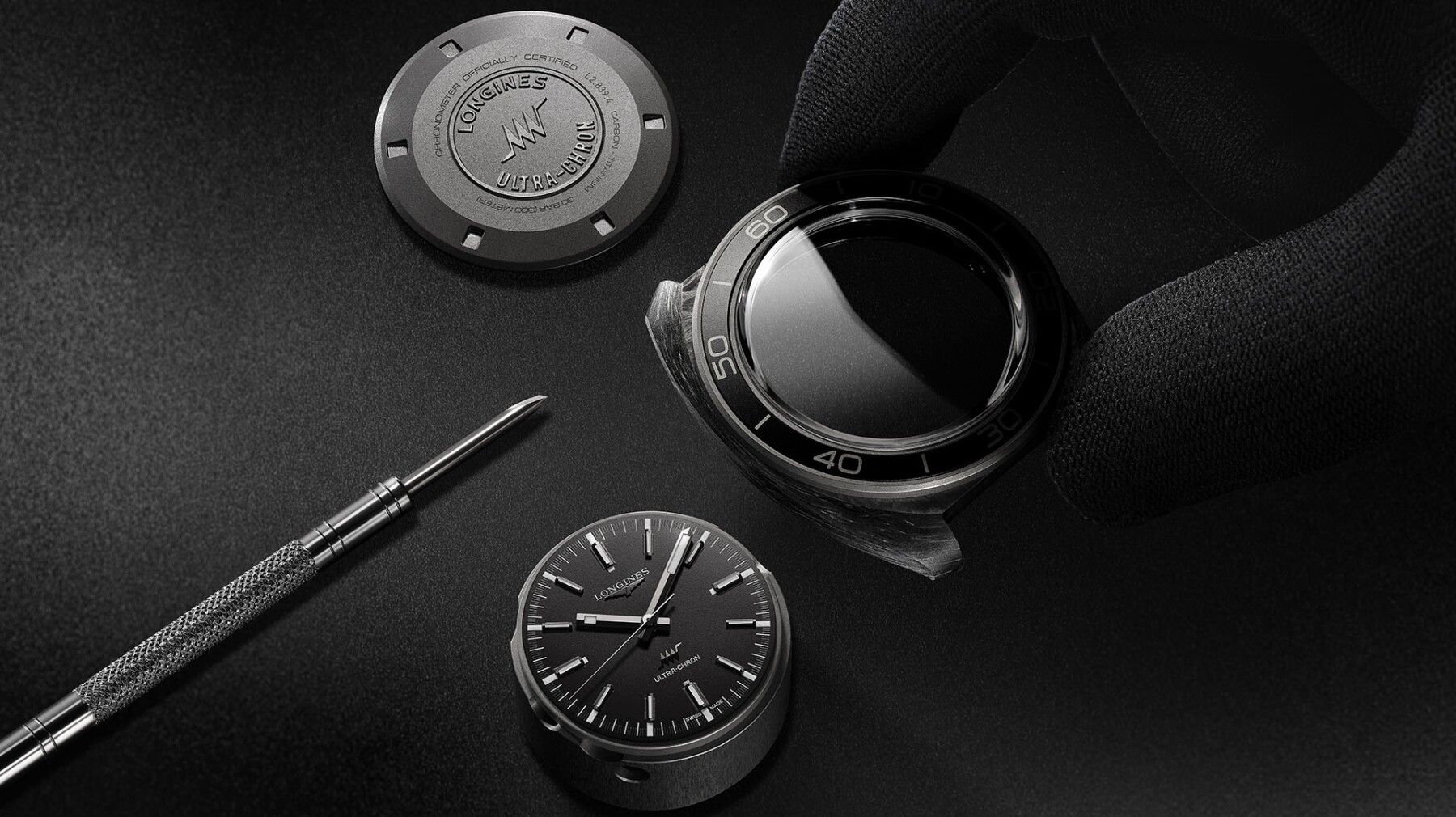
 Back
Back 